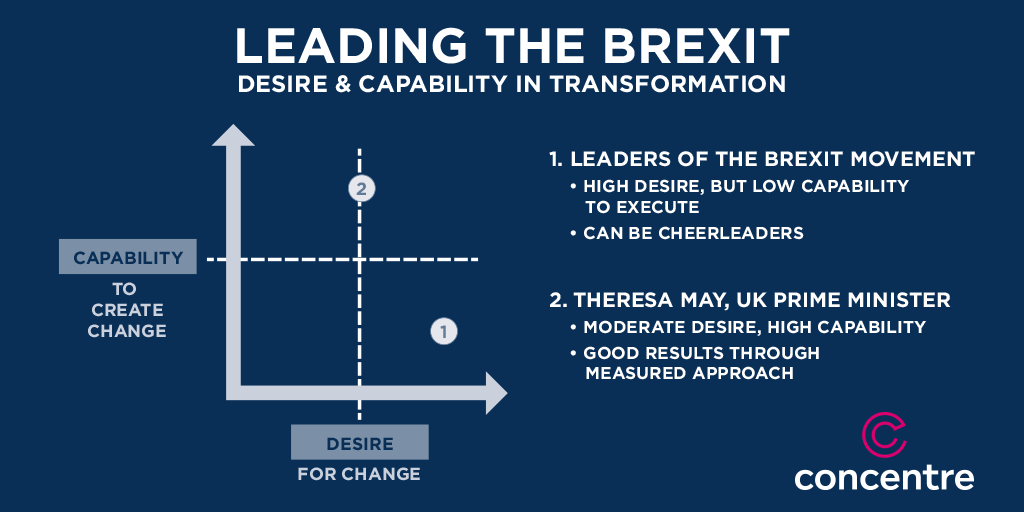Theresa May wasn’t a huge fan of the Brexit.
That’s why she might be the ideal Prime Minister to lead it.
The current affairs in England and the EU have me thinking about the importance of clarity in any massive transformation.
In my experience working with IT organizations, I’ve observed a fundamental relationship between the desire for change and the capability to effectively see it through.
Our team developed the tool below. It illustrates how desire and capability work to influence transformation in an enterprise. Success lives in the upper-right quadrant—where the commitment to change meets the capacity to implement it.
The “Brexit”— Great Britain’s decision to “exit” the European Union—perfectly illustrates this concept.

Leaders of the pro-Brexit movement were passionate in their argument for an independent Great Britain. Their campaign, portrayed in the global media as having risen up almost overnight, called for immediate secession. But once the ballots were cast and the decision made, pro-Brexit organizers couldn’t produce a well-qualified candidate to challenge for prime minister. In other words, the desire wasn’t enough. Change of this magnitude must have competent, capable leadership.
Leadership that’s Capable of Change
Now consider Theresa May, England’s newly installed prime minister. May is a tenured figure in UK politics. Perhaps more important, she is somewhat moderate compared to conservative Brexit supporters. It means she is likely to have a measured, pragmatic approach to change—not to mention support from more members of Parliament. A more passionate prime minister might also have been more stubborn.
Theresa May’s challenge as prime minister is a significant one. All eyes are on her and her cabinet—and the global economy hangs in the balance. But because she has a good combination of determination and skill, she stands a better chance of affecting change and securing Britain’s future.
What do desire and capability look like in your organization? Do you have the right people in the right places to successfully navigate transformation? As always, I invite you to share your experiences and insights.



